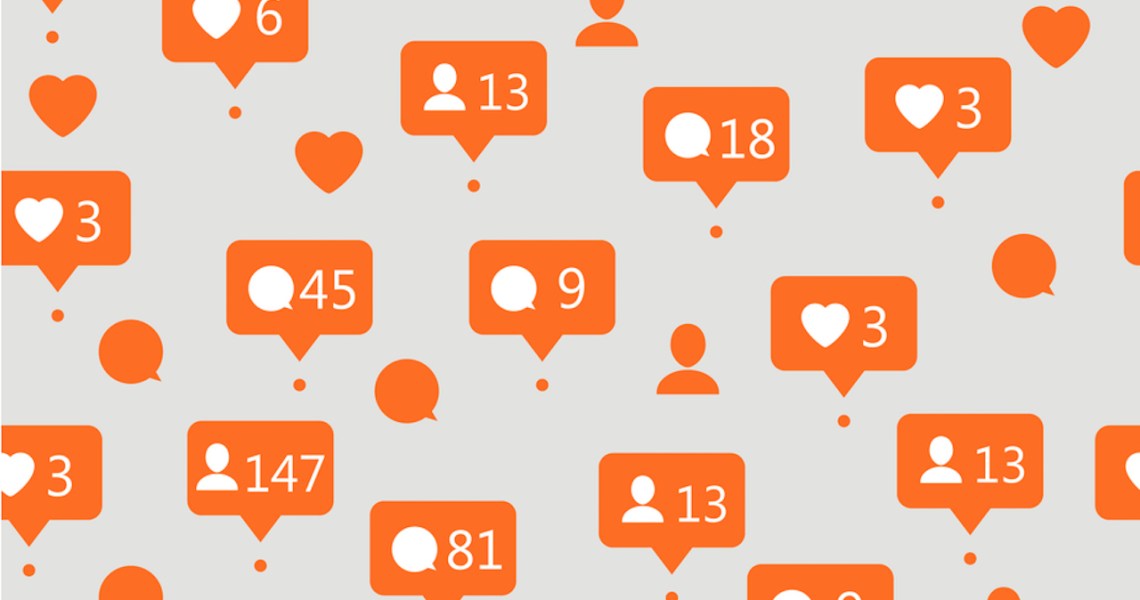On Friday, Instagram CEO Adam Mosseri tweeted that, beginning this week, the social media platform will start testing hiding likes for groups of users in the U.S.
While the feature is in its early stages in the U.S. (it’s already being tested in seven countries including Australia, Ireland and Canada), the change could have a big impact on young fashion brands if it becomes the norm. For many young DTC brands, Instagram is a key social media platform for everything from testing the potential success of advertising campaigns to growing brand awareness early on. In a world sans likes, some brands worry engagement will go down, growth will stall and building a digital community will be that much harder.
Direct-to-consumer swimwear brand Beefcake, which currently has nearly 7,000 Instagram followers and launched in 2017, said the shift is definitely concerning for the company, especially as it’s trying to grow its community of followers.
“For us as a brand, having likes hidden is frustrating, since it removes an important way for us to signal our legitimacy to potential customers,” said Mel Wells, founder of Beefcake.
As Wells sees it, the brand’s likes signal something more.
“Our brand’s mission is to disrupt traditional notions of gendered beauty in swimwear. When you see images of people who are all different shapes, sizes and gender presentations looking confident and happy in swimwear, and those posts are getting hundreds of likes, it shifts your concept of what is attractive and beautiful. Removing likes removes some of the post’s power,” Wells said.
One reason why Instagram is testing this feature is to help improve mental health among younger users, Mosseri said at the Wired25 summit on Friday. The idea is that, by removing likes, people will be less obsessive over what to post, and feel less ashamed or embarrassed when posts don’t amass a ton of likes.
“Looking at younger users who really pay close attention to their feeds, some who even archive posts that don’t get enough likes, hopefully this will lead to people feeling more comfortable posting content and taking creative risks across the board,”said Michelle Plantan, executive director of creative strategy and social media at Who What Wear.
While Instagram may be pushing the mental health lens to consumers, some brands aren’t buying it.
Micki Krimmel, founder of activewear brand Superfit Hero, said she expects to see a lot more Instagram advertising tools hit the market in the near future, should Instagram decide to expand this feature.
“Brands are paying influencers a lot of money based on Instagram likes, and Instagram isn’t getting a cut of those transactions. I expect Instagram to roll out more advertising tools to connect brands and influencers [with high engagement]. Likes aren’t going away. Brands will simply have to pay Instagram to see them,” said Krimmel.
Others see the potential shift as a welcome challenge for brands if Instagram decides to fully hide likes.
“Essentially, it will require brands to focus on fostering community rather than surface-level content that appears pretty but doesn’t drive conversation. Brands will need to focus on the quality of conversation happening in places like in the comments section of posts, in DMs, and in responses to things like Polls and Questions tags,” said Lindsay Johnson, group account director for influencer and social media marketing at Small Girls PR.
While most brands and agencies use a variety of metrics to determine the success of an influencer campaign, likes have long been an easy metric for companies to quickly see how well a post is performing and whether that influencer investment is paying off.
Bea Iturregui, vp of brand partnerships at influencer marketing agency Cycle, said brands (and influencers) shouldn’t panic about likes going away. Instead, they should shift focus to other metrics, she said.
“Consumers will now be forced to be more thoughtful in how they are engaging with content online, which will primarily take the form of comments, swipe-ups and clicking on product tags. From a marketing perspective, streamlining how many actions a consumer can take around a piece of content will allow DTC companies to drive actual business results more efficiently. It will also lead to a focus on better, more meaningful measurement statistics, like conversion, sales and sentiment analysis,” Iturregui said.
Influencer marketing agency Obviously surveyed a group of 300 international influencers over the summer when Instagram first started to roll out these tests to several other countries. These were influencers who had already experienced hidden likes. Of those surveyed, 62% said they wanted their likes to remain hidden, and 51% said they saw no change in the number of likes they received when the metric was hidden.
Mae Karwowski, founder & CEO of Obviously, said if brands and influencers have the right technology, removing likes really won’t be a big deal.
“Good influencer marketers will still have access to those metrics, even if they’re hidden [by working with an agency]. We’ll still be able to know an influencer’s engagement rates before committing to working with them, and we’ll still be able to fully report on performance metrics. Overall, it’s going to become really clear which agencies have the tech, strategy and expertise to thrive, despite this change,” said Karwowski.




